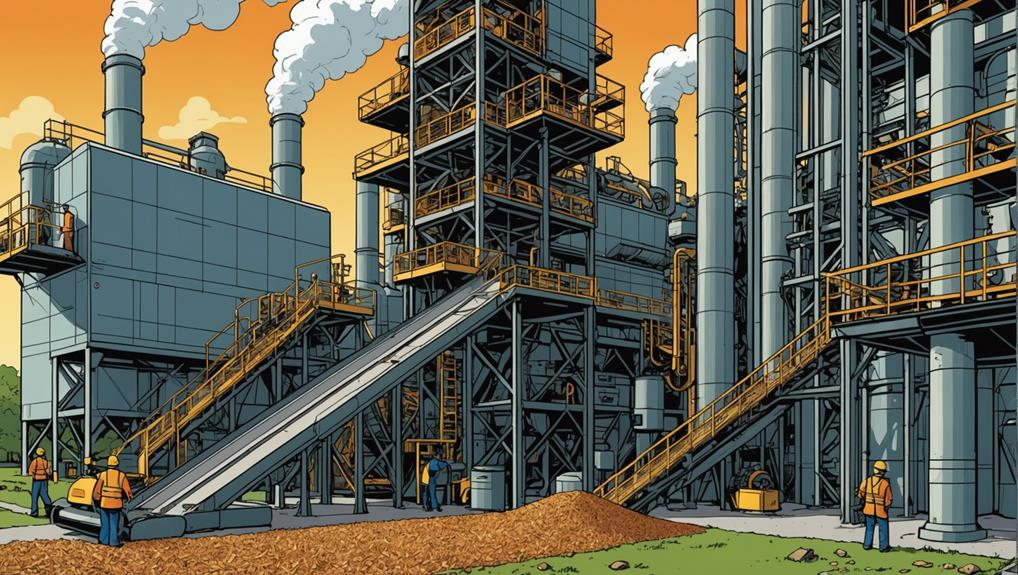To harness biomass energy, organic materials are converted into gas or liquid fuel. Burning biomass directly in boilers generates steam for electricity. Anaerobic digestion breaks down waste to create renewable gas. Gasification and pyrolysis turn biomass into syngas or bio-oil for electricity or fuel. Gasification involves high temperatures and limited oxygen, while pyrolysis heats biomass without oxygen. These methods provide efficient and sustainable energy solutions. If you want to learn more about different biomass conversion technologies and their applications, keep exploring the diverse ways biomass energy is utilized.
Key Takeaways
- Biomass energy is harnessed through processes like direct combustion, anaerobic digestion, gasification, and pyrolysis.
- Direct combustion involves burning biomass to produce heat and steam for electricity.
- Anaerobic digestion breaks down organic waste to create renewable natural gas.
- Gasification converts biomass into syngas using high temperatures and limited oxygen.
- Pyrolysis heats biomass without oxygen to produce bio-oil for electricity or liquid fuel.
Biomass Energy Production Methods
How is biomass energy harnessed through different production methods?
Renewable energy from biomass is generated by converting organic materials into various forms, such as gas or liquid fuel. By burning biomass directly in boilers, steam is produced to generate electricity in power plants efficiently.
Additionally, anaerobic digestion uses bacteria to break down organic waste, creating methane for renewable natural gas, a sustainable energy source.
Gasification and pyrolysis are two advanced methods that convert biomass into syngas or bio-oil, enabling the production of electricity or liquid fuel. These diverse techniques maximize the energy potential of biomass resources while promoting environmental sustainability.
Biomass Conversion Technologies
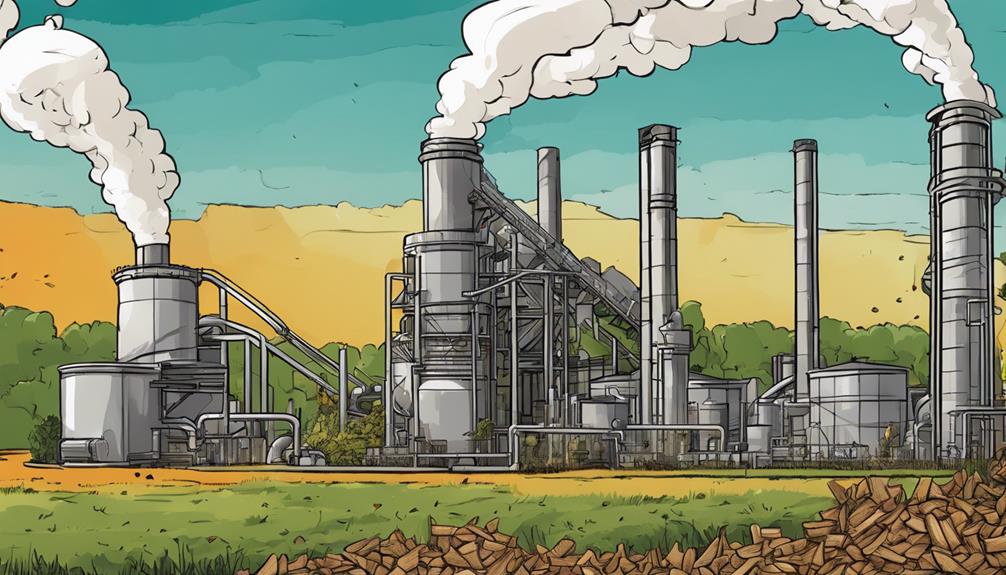
You'll learn about gasification and pyrolysis in biomass conversion. Gasification involves high temperatures and limited oxygen to create syngas, while pyrolysis heats biomass without oxygen to produce bio-oil.
These methods are essential for transforming organic matter into energy sources.
Gasification for Biomass Conversion
Gasification, a key biomass conversion technology, involves subjecting organic materials to high temperatures with limited oxygen to produce syngas. Syngas, a versatile fuel source, consists of carbon monoxide and hydrogen and can be utilized for heating, electricity generation, and chemical production. Compared to direct combustion, gasification offers higher efficiency and the ability to generate valuable chemicals and fuels from biomass resources. This process is adaptable and can utilize various feedstocks like wood, agricultural residues, and municipal solid waste, making it a sustainable energy solution. By converting biomass into syngas, gasification helps mitigate greenhouse gas emissions and provides a renewable alternative to traditional fossil fuels in diverse industries.
| Gasification Benefits | Description |
|---|---|
| Efficient Energy Production | Gasification provides higher efficiency compared to direct biomass combustion. |
| Versatile Feedstock Usage | Various organic materials such as wood and agricultural waste can be used. |
| Reduced Greenhouse Gas Emissions | Converting biomass into syngas helps decrease greenhouse gas emissions. |
Pyrolysis for Biofuel Production
Pyrolysis, a biomass conversion process, involves heating organic material in the absence of oxygen to produce bio-oil. This bio-oil can be further refined into renewable fuels such as gasoline, diesel, and jet fuel.
By utilizing pyrolysis, biomass waste like agricultural residues and wood chips can be transformed into valuable biofuels. One of the key advantages of bio-oil produced through pyrolysis is its lower sulfur content in comparison to traditional fossil fuels.
This process presents a sustainable solution for generating biofuels from biomass sources, aligning with goals for renewable energy production. Embracing pyrolysis for biofuel production not only helps in reducing waste but also contributes to diversifying the energy mix with cleaner and more sustainable alternatives.
Incorporating pyrolysis into biomass conversion technologies is a significant step towards achieving a more environmentally friendly and efficient energy sector.
Applications of Biomass Energy
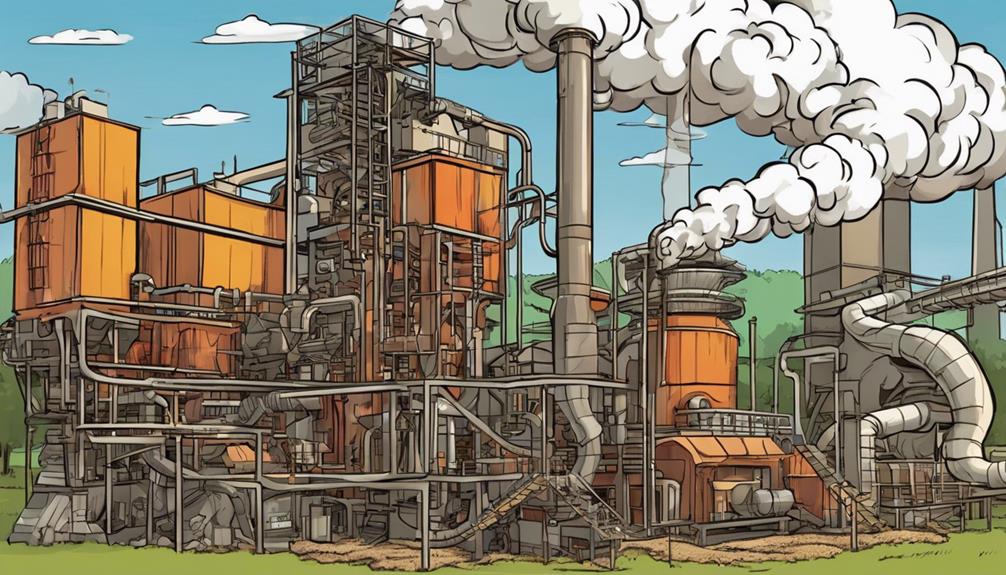
Numerous applications exist for harnessing biomass energy efficiently and sustainably, ranging from direct firing to the production of renewable natural gas through anaerobic decomposition. Here are some key applications:
- Direct Firing: Biomass energy is utilized in direct firing processes, where organic materials are burned to produce heat and electricity for various industrial and residential purposes.
- Anaerobic Decomposition: Organic waste undergoes anaerobic decomposition in landfills and farms, generating methane that can be captured and used as a renewable natural gas, reducing reliance on fossil fuels.
- Algal Fuel: Fast-growing algae are processed into biofuels like green crude, providing an eco-friendly alternative for traditional fuel sources and contributing to sustainable energy practices.
- Hydrogen Fuel Cells: Biomass-powered hydrogen fuel cells are employed in diverse applications such as buses, forklifts, and submarines, offering clean energy solutions and aiding in the reduction of greenhouse gas emissions.
Environmental Impact of Biomass

Utilizing biomass energy has a significant impact on the environment due to its role in the Earth's carbon cycle and the need for sustainable farming practices. Biomass energy relies on organic materials such as plants and waste, which play an important role in carbon sequestration. Sustainable farming practices are vital to guarantee the environmental benefits of biomass energy production.
Algae, with its impressive carbon absorption capabilities, stands out as an eco-friendly source for biomass production. However, disrupting soil or biomass materials can have adverse effects on the carbon cycle, highlighting the importance of sustainable biomass management practices.
Challenges in biomass energy production include the need to contemplate replenishment rates, land competition, and reducing reliance on fossil fuels for a greener future. By addressing these challenges and advocating for sustainable practices, the environmental impact of biomass energy can be optimized for a more sustainable and eco-conscious energy sector.
Biomass Energy Trade Overview

You can explore the latest trends in biomass energy exports, particularly the significant rise in densified fuel exports like wood pellets.
The U.S.'s role as a net exporter in the biomass energy market has been highlighted in recent trade data. With approximately 8.8 million tons of wood fuel pellets exported in 2022, the U.S. continues to play an active role in shaping global biomass trade dynamics.
Biomass Export Trends
With the U.S. emerging as a net exporter of biomass energy, the latest data reveals a notable increase in biomass export trends, particularly in densified biomass fuels like wood pellets. This trend signifies the growing demand for sustainable energy sources globally.
The trade data, as sourced from the Monthly Energy Review, April 2023, highlights the following key points:
- The U.S. is now a net exporter of biomass energy, surpassing imports.
- Wood pellets have become a significant export commodity for the U.S.
- Approximately 8.8 million tons of wood fuel pellets were exported by the U.S. in 2022.
- The positive trend in biomass energy exports showcases the increasing global interest in biomass products and sustainable energy solutions.
These statistics underscore the importance of biomass energy in the global energy trade landscape, positioning the U.S. as a key player in exporting biomass resources.
Densified Fuel Exports
The surge in densified fuel exports, particularly wood pellets, underscores the important role of the U.S. in the global biomass energy trade. In 2022, the U.S. exported approximately 8.8 million tons of wood fuel pellets, highlighting the growing market for densified biomass fuels.
This substantial export volume solidifies the U.S.'s position as a key player in the biomass energy industry, showcasing its strength in producing and exporting wood pellets. The country's status as a net exporter of biomass energy further cements its influence in the global market.
Data from the Monthly Energy Review, April 2023, confirms the U.S.'s prominence in exporting densified biomass fuels. Wood pellets, being a vital component of the U.S. biomass energy trade, not only contribute significantly to the country's economy but also demonstrate its impact on the worldwide biomass market.
Future of Biomass Energy

Advancements in biomass energy technology are paving the way for a sustainable future in energy production. As ongoing research focuses on enhancing biomass conversion methods, efficiency and sustainability are being prioritized.
Collaboration among industry, academia, and government is driving innovation in biomass energy, leading to significant developments in the field. The future of biomass energy looks promising as continuous efforts are directed towards developing new ways to convert and utilize more biomass for energy production.
With the U.S. being a net exporter of biomass energy, surpassing imports in 2022, the global landscape for biomass energy utilization is evolving rapidly.
- Ongoing research aims to enhance biomass conversion methods for improved efficiency and sustainability.
- Collaboration between industry, academia, and government is driving innovation in biomass energy.
- Biomass energy plays a significant role in the U.S. energy mix, contributing to 5% of total energy consumption.
- Continuous efforts are focused on developing new ways to convert and utilize more biomass for energy production.
U.S. Biomass Energy Usage
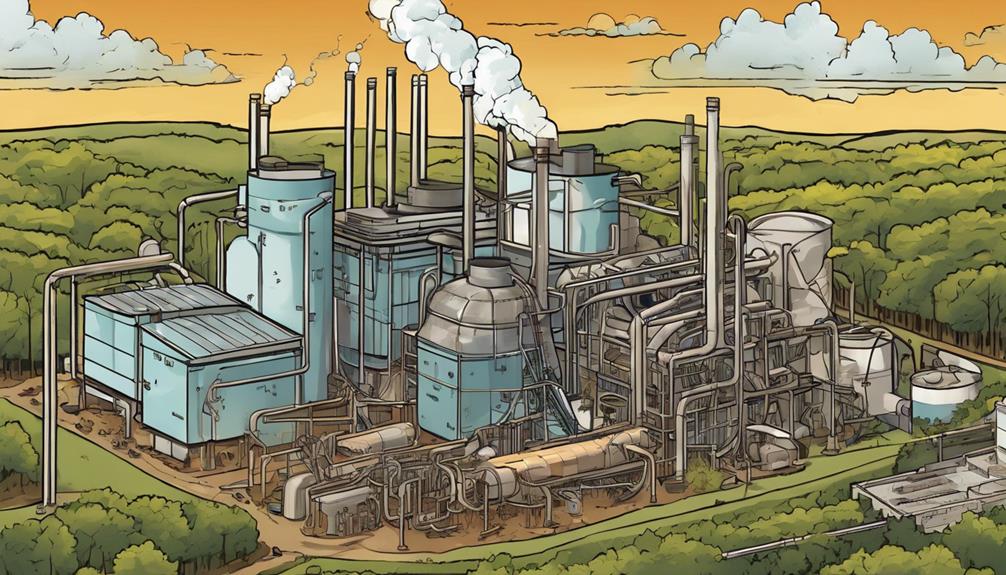
In the United States, the industrial sector stands out as the largest consumer of biomass energy, utilizing 46% of the total biomass energy output. Following closely behind, the transportation sector consumes 32% of the biomass energy in the U.S.
The residential sector accounts for 11% of biomass energy usage, primarily for heating and electricity purposes. The electric power sector contributes 8% to the overall biomass energy consumption in the country.
Moreover, the U.S. biomass energy trade data reveals that the nation is a net exporter of biomass energy. In 2022, the total exports of biomass energy exceeded the imports, showcasing the U.S.'s position in the global biomass energy market.
This trade dynamic underscores the country's capacity to harness and utilize biomass energy efficiently, not only for domestic consumption but also for international trade.
Biomass Energy Facts and Statistics
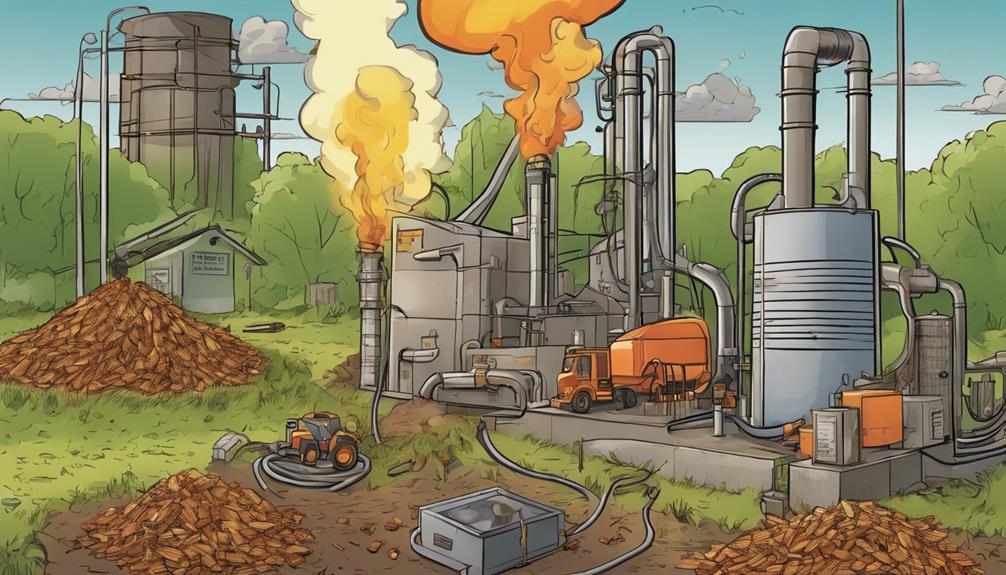
To gain a comprehensive understanding of biomass energy, exploring key facts and statistics is vital. Here are some important points to keep in mind:
- Biomass accounted for approximately 5% of total U.S. energy consumption in recent years.
- Thermal decomposition is a common process used to convert biomass feedstock into usable energy.
- Biomass energy plays an important role in producing electricity, especially in rural areas and off-grid locations.
- The production of usable energy from biomass helps reduce greenhouse gas emissions and promotes sustainable energy practices.
These facts highlight the importance of biomass energy in the current energy landscape.
Frequently Asked Questions
How Is Biomass Energy Acquired?
To acquire biomass energy, you convert organic materials like wood and waste into usable energy. Processes like combustion and gasification are used. Collect biomass from sources like forests and farms for energy production.
How Is Energy From Biomass Transported?
When it comes to transporting biomass energy, various methods are used, such as trucks, trains, and ships. For instance, wood pellets are typically moved in bulk via trucks or railcars to biomass power plants efficiently.
How Does Biomass Conversion Generate Energy From?
To generate energy from biomass, various methods are used, such as direct combustion, gasification, pyrolysis, and anaerobic digestion. These processes involve transforming biomass into usable energy sources like electricity, heat, and biofuels.
How Is Biomass Energy Trapped?
To trap biomass energy, plants and trees absorb solar energy, converting carbon dioxide and water into organic compounds through photosynthesis. This process stores chemical energy in organic matter, which can be released for energy production.
Can Biomass Energy be Utilized in a Similar Way to Wind Energy?
Biomass energy can be harnessed in a way similar to wind energy, utilizing wind turbines and human scale systems. Both energy sources can be used to generate electricity, but biomass has the added benefit of being able to produce heat as well. This makes it a versatile option for sustainable energy production.
Conclusion
So, now you know how biomass energy is harnessed! Did you know that in 2020, the U.S. generated 71.4 billion kilowatt-hours of electricity from biomass energy sources? Pretty amazing, right?
Keep exploring the world of renewable energy and see how you can contribute to a greener future!
